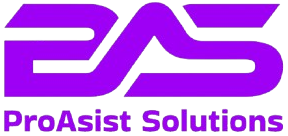Seamless Transitions: Cracking Siebel Data Migration Roles
Siebel, a robust Customer Relationship Management (CRM) system, often requires complex data migration projects during upgrades, implementations, or consolidations. Landing a Siebel Data Migration role demands a specialized skillset encompassing Siebel architecture, data analysis, and ETL processes. This blog will guide you through the strategies to crack Siebel Data Migration interviews.
Understanding the Siebel Data Migration Landscape
Siebel Data Migration roles typically involve:
- Siebel Architecture: In-depth knowledge of Siebel’s data model, business components, and integration objects.
- Data Analysis and Profiling: Ability to analyze legacy data, identify data quality issues, and define transformation rules.
- ETL Processes: Proficiency in ETL tools (e.g., Informatica, DataStage) and Siebel-specific data loading utilities (e.g., EIM).
- SQL and Database Skills: Strong SQL skills for data querying and manipulation within Siebel databases.
- Data Mapping and Transformation: Expertise in defining and implementing data mapping and transformation logic between source and target systems.
- Testing and Validation: Experience with data migration testing, validation, and reconciliation.
- Siebel Configuration: Understanding of Siebel configuration and customization to support data migration requirements.
- Siebel EIM (Enterprise Integration Manager): Deep understanding of Siebel’s EIM and it’s use for data migration.
Strategies to Ace Your Siebel Data Migration Interview
Cracking Siebel Data Migration interviews requires a blend of technical proficiency and domain-specific knowledge. Here’s your roadmap:
1. Master Siebel Architecture:
- Siebel Data Model: Thoroughly understand Siebel’s data model, including business components, tables, and relationships.
- Integration Objects: Familiarize yourself with Siebel integration objects and their use in data migration.
- Siebel Tools: Gain proficiency in Siebel Tools for configuration and data analysis.
- Understand Siebel EIM: Become an expert at Siebel Enterprise Integration Manager. Be ready to explain how it works, and when to use it.
2. Excel in Data Analysis and ETL:
- Strong SQL Skills: Practice writing complex SQL queries for data analysis and manipulation within Siebel databases.
- ETL Tools Proficiency: Gain hands-on experience with ETL tools like Informatica, DataStage, or similar.
- Data Profiling Techniques: Learn how to analyze source data, identify data quality issues, and define transformation rules.
3. Conquer Data Mapping and Transformation:
- Data Mapping Expertise: Practice defining data mapping rules between source and target Siebel systems.
- Data Transformation Techniques: Understand various data transformation techniques, including data cleansing, normalization, and enrichment.
- Understand Data Modelling: Understand how data models are important in the migration process.
4. Focus on Testing and Validation:
- Data Migration Testing: Learn about different data migration testing techniques, such as unit testing, integration testing, and user acceptance testing.
- Data Validation and Reconciliation: Practice validating migrated data to ensure accuracy and completeness. Be able to compare source and target data to verify the migration.
5. Build Siebel-Specific Domain Knowledge:
- Siebel Business Processes: Understand common Siebel business processes and their impact on data migration.
- Industry-Specific Siebel Implementations: If possible, gain knowledge of Siebel implementations in specific industries.
6. Build a Relevant Portfolio:
- Showcase Siebel Data Migration Projects: If possible, include Siebel data migration projects in your portfolio.
- Highlight ETL and SQL Skills: Emphasize your ETL and SQL skills in your resume and portfolio.
- Siebel EIM Experience: If you have experience with Siebel EIM, make sure to highlight this.
7. Ace the Interview Rounds:
- Technical Interviews: Expect questions on Siebel architecture, data analysis, ETL processes, SQL, and data migration testing.
- Coding Challenges: Be prepared for coding challenges that involve SQL queries or data transformation scripts.
- Data Mapping Exercises: You might be asked to define data mapping rules for a given scenario.
- Siebel EIM questions: Expect many questions about the Siebel EIM, and how to use it.
- Behavioral Interviews: Prepare using the STAR method to showcase your problem-solving skills, analytical abilities, and communication skills.
8. Tailor Your Approach:
- Research the Company and Role: Understand the company’s industry, their Siebel implementation, and the specific requirements of the role.
- Highlight Relevant Experience: Emphasize projects and experiences that align with the company’s work.
9. Communicate Effectively:
- Explain Technical Concepts Clearly: Be able to explain complex technical concepts in a clear and concise manner.
- Demonstrate Analytical Skills: Showcase your ability to analyze data and solve problems.
- Ask Clarifying Questions: Don’t hesitate to ask for clarification if you’re unsure about a question.
Key Considerations for Siebel Data Migration Roles
- Data Quality: Data quality is paramount for successful Siebel data migrations.
- Data Security: Data security is crucial when migrating sensitive customer data.
- Performance Optimization: Siebel data migration processes must be optimized for performance.
- Siebel Customizations: Account for Siebel customizations when defining data migration rules.
By mastering Siebel architecture, developing strong data analysis and ETL skills, building a relevant portfolio, and communicating effectively, you can confidently crack your Siebel Data Migration interviews and contribute to the success of critical CRM systems. Good luck!
![Untitled design (1)[1]](https://proasistsolutions.com/wp-content/uploads/2021/04/Untitled-design-11-e1744036396309.png)



